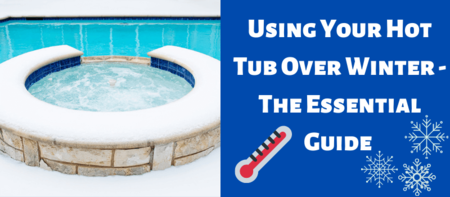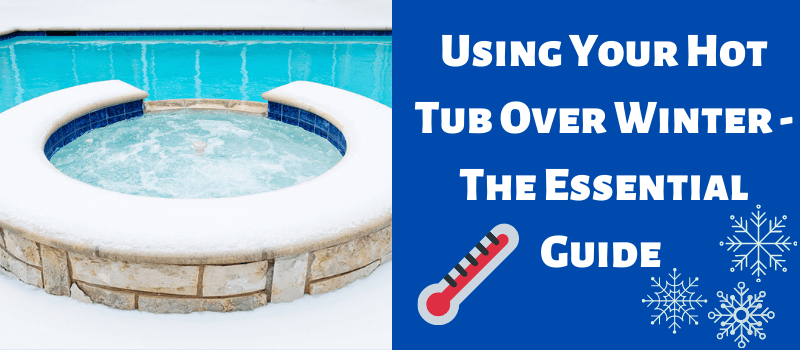
Many people view winter as being the very best season for hot tubbing, the combination of cold bracing air and soothing hot water is very enticing. However, the cold weather can be challenging for both your hot tub and it’s bathers and you do have to use your hot tub wisely to get the best from it at this time of year. This guide will help you to get the most from your hot tub over the winter season and hopefully convert you to the joys of winter hot tubbing for many years to come!
So, can I use my hot tub in the winter? Modern hot tubs (apart from inflatable ones) are generally designed to be used 24/7 and 365 days of the year. There is no real reason why you can’t keep your hot tub running all year round unless you live is serious sub-zero temperatures where even still, with a bit of careful managing, you should be able to run an outdoor hot tub anyway.
12 Winter hot-tubbing tips:
So, to start off with, here are some of the top tips to help you get the very best from your hot tub over winter:
1. Preplan any routine draining – Firstly try to time it so that you don’t have to drain and refill your hot tub in the depths of winter if at all possible. Few of us enjoy working outside in the freezing cold and, if the temperature is around freezing point or below when you try to do this job it will be much more difficult. The risk of standing water freezing inside the hot tub is increased and if you drain the old hot tub water over the garden it will take ages to disperse and may well freeze into a slippery solid block of ice
Most hot tubs can go from between 3 and 4 months between water changes so, if you change the water as late as you can in the Autumn you may well be able to get through until the worst of the winter weather is passed before you need to change it again. Which brings me on to my next point……
2. Keep up with your schedule of routine maintenance – It might be tempting not to go out into the cold regularly to maintain your water chemistry but it is just as important to keep up with the routine jobs as it is in the Summer. In fact, bearing in mind that you will want to avoid changing the water for as long as possible keeping up with your water chemistry is doubly important.
In theory at least if you keep your PH levels correct and your sanitizer working at it’s optimal level then you should be able to avoid a full water change for up to four months. It will also help a lot if you have a shower before getting into the hot tub in that dirt, debris and impurities from your body will be washed away rather than going into the hot tub which will build up and cause problems.
Obviously, you should try to do this all year round but in the winter, if you are trying to avoid changing the water, then it becomes much more important.

It’s also important that you try to remove the hot tub cover every week throughout the winter and allow it to dry out. This can be a bit challenging in the winter months due to the weather but, if there is a warmer or a dry, windy day, then letting the hot tub cover “breath” will significantly help to reduce moisture damage and lengthen the life of the cover.
3. Check for leaks before the winter – Before the cold weather sets in it is a good idea to have a good look around the hot tub to make sure that you haven’t got any leaks. Leaks are a problem during the Summer as well but in Winter a leak in the hot tub can lead to frozen water in the insulation or to frost damage in the hot tub components themselves.
You may also find that the leaking water makes a pool of water beside your hot tub as it leaks out of the cabinet and in the winter this can freeze and make a dangerously slippery patch of ice if it’s on tiles, concrete or a decking area.
So, have a good look around the inside of the cabinet for any tell tale signs of dampness. You can also look around the perimeter of the hot tub to see if you can see any water stains. I have a whole post on checking for and fixing leaks in your hot tub which you can find here.
4. Check your hot tub cover – Your hot tub cover will be vital over the winter as it will be the primary means by which the water keeps hot. Obviously hot air rises so, if your cover is worn, waterlogged or doesn’t fit properly then you will be losing a lot of heat through it and this will be reflected in your energy bills.
Firstly, make sure that the cover still fits properly and that the fastenings are effective. Then check for any obvious damage. Tears in the vinyl can be problematic as there is a risk that the vapour barrier beneath it will be tor and letting moisture through to the foam core.
If you core starts to collect moisture it slowly becomes waterlogged and becomes heavier and heavier until it is almost impossible to lift off the hot tub. In extreme cases the water will freeze inside the core effectively creating a massive block of ice sitting on top of your hot tub.
Not only is the weight of a waterlogged hot tub cover problematic it will also severely lose it’s insulating capacity as the water content increases. If you know that you have either a poor quality or a waterlogged hot tub cover you need to think very carefully about the practicality of running the hot tub through the winter without replacing it. You will waste a significant amount of energy and, in some cases, find that the hot tub struggles to keep up to temperature.
If you would like to find out more about caring for your hot tub cover or replacing it then click here. If you have a waterlogged hot tub cover then click on my post here which will help you out.
5. Use the hot tub’s freeze protect mode – I guess this is winter hot tubbing 101! Most hot tubs will have a freeze protect mode which will sense when the air temperature is getting close to zero and keep the hot tub’s circulation pump going to keep the water moving and prevent it from freezing. You can just keep this switched on all the time even if you intend to keep the hot tub at working temperature over the winter as a back up in case the water temperature falls or you programme the hot tub incorrectly.
6. Use a thermal floating blanket – Floating thermal blankets are relatively inexpensive and offer a good extra layer of insulation on the top of the hot tub water. Basically the blanket is a bit like bubble wrap in that it usually has air pockets which provide insulation and also the buoyancy for the blanket to float on top of the water.
Choose a blanket or cut the blanket so that it is an exact fit for the surface area of your hot tub and float it on the water when the hot tub isn’t in use. It should be used in combination with the main hot tub cover to provide an extra layer of insulation. Remember, however, not to lay the floating blanket on the hot tub, or put the cover over if you have just added chemicals to the hot tub.
You need to allow for the chemical vapours to disperse before covering the hot tub again otherwise the underneath of your hot tub cover will, over time suffer due to the chemical attack.
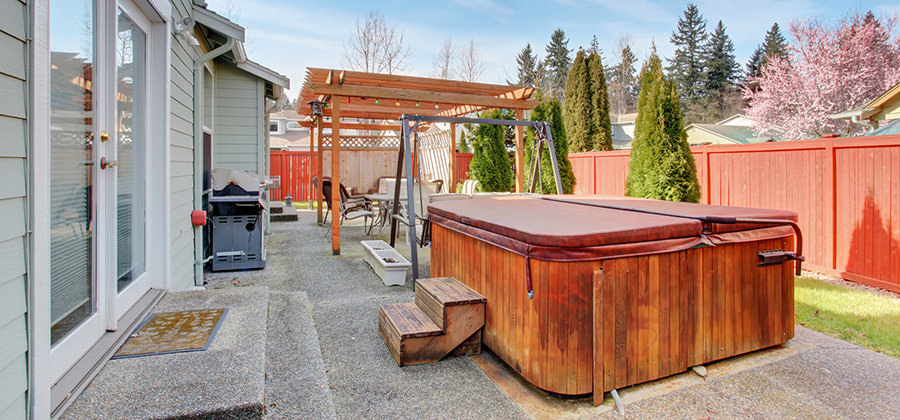
7. Use a cover cap or full cover – As well as using a thermal floating blanket and the full cover it is a good idea to use either a hot tub cap or even a full tarpaulin cover during the winter months. If you know there is going to be a period of high winds, driving rain or snow then fully protecting the hot tub with a tarp cover will help to keep the warm air in and protect the cabinet from the extremes of the elements.
If you do use a tarpaulin or full cover make sure that it is firmly strapped down as, if it catches the wind, it will act like a sail and potentially cause damage as it blows around.
A hot tub cap goes over the upper part of the hot tub and again will keep out cold winds and driving rain. Hot tub caps are easily caught in the wind so again, make sure yours is fully strapped down.
8. Monitor the water level regularly – You need to keep an eye on your water level all year round but, in the winter, if it is too low there is a risk of some parts of the hot tub being exposed to cold air and freezing. If you have a couple of jets out of the water or a waterfall feature that isn’t quite collecting enough water, for example, the combination of a little bit of water and the cold air could lead to freezing.
There should be a mark on the side of the hot tub shell indicating what the fill level of the hot tub is. If you can’t find it then consult your manual or your dealer and, if all else fails just make sure that the water level is a good inch or more above the highest jet/filter on the side of the hot tub. You will find that the water level drops due to evaporation and also due to splashing and water retention of bathers. The more the hot tub is used the more often the water will need refilling.
Remember, if you add fresh water to your hot tub to filter it on it’s way in and then to check your water chemistry afterwards to make sure that the balance is still correct. Whilst researching this post I did come across some advice against simply throwing snow into your hot tub to keep the water level correct! I’m not even going to start listing the reasons why this isn’t a great idea – just don’t do it!
9. Use the jets sparingly – Your jets and blower add cold air from inside the hot tub cabinet to the water. In summer this isn’t so much of a problem as the air will be relatively warm but, in winter the air being introduced could be 40 degrees centigrade or more lower! This will obviously lead to a rapid decrease in the water temperature meaning that your hot tub will have to work harder and use more energy to make up the difference. Using your jets is nice however, if at all possible use them sparingly during the winter months when it is very cold.
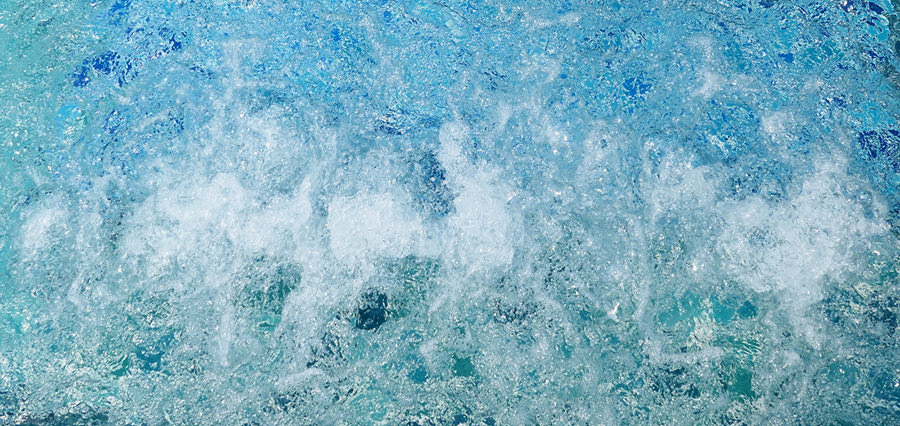
10. Keep an eye on your soak times – The human body doesn’t cope too well with rapid and dramatic temperature changes. Sometimes, when going from one temperature to another you can experience dizziness and shortness of breath. However, sometimes it is quite nice to go from hot to cold – I am reminded of a sauna and plunge pool combination at a recent spa visit! The secret is not to stay in the hot tub for too long in the winter and allow your core temperature to rise too high.
The general advice is that about 20 mins is a good amount of time and after that, you should get out and cool off. Of course, there’s nothing to prevent you from getting back in again after a little while it’s just that if your body is surrounded by 40 degree water for a long time and then suddenly experiences air temperature at around or below zero it takes a little while to catch up. The problem is, that at the point of temperature change you are going to be rather precariously climbing out of a wet and slippery hot tub.
It really isn’t the best time to be feeling light headed and, whilst the dizziness may well not do you any real damage the risk of falling back into the hot tub and hurting yourself is quite high.
11. Remove snow and ice regularly – If you have standing snow and ice on your hot tub it is a good idea to remove it regularly to prevent it building and also to prevent the whole hot tub become frozen solid! Be very careful when you are removing snow from on top of the hot tub cover. If you try to do this with a spade or a hard implement there is a significant risk of damaging the vinyl cover and letting water inside the cover. It’s a much better idea to brush the snow off and to take your time to avoid damage.
12. Plan an exit strategy – Finally, one of the most important aspects of winter hot tubbing is to plan your exit strategy. It’s generally not too bad hopping outside and getting into a nice warm hot tub but often the thought of getting out is not so enticing!
So, what do you need?
I would highly recommend an outdoor heated towel rail and also the thickest fluffiest and warmest towels and robes that you can find. Have these very close to hand (or get a willing not hot tubbing friend/family member to volunteer to pass them to you!) so that you can get out of the warm water immediately into a warm robe. You will need a good pair of sandals or slippers to keep your feet off the cold floor and then you should head straight for the inside. If you can have a fire lit and the kettle boiled ready to make your favourite hot drink then all the better!
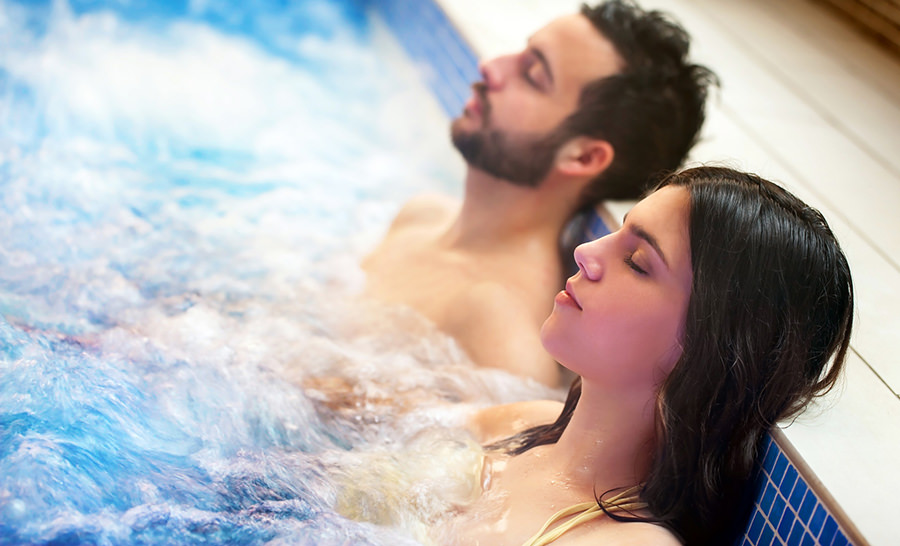
In the winter I would put off shocking the tub and replacing the lid until I was clothed and warm again. This really isn’t a job to be done semi-naked in freezing temperatures!
So, being comfortable when you get in and particularly out of the hot tub in the winter just needs a bit of forward planning. With a bit of thought and a few careful strategies, there really isn’t any reason why you shouldn’t use the hot tub as much as in the summer months and maybe enjoy it as much or, in a different way, even more!
Can I Use My Hot Tub Over the Winter?
The main potential technical problem with using a hot tub over the winter is one of freezing water. If the water in the inner workings of the hot tub freezes then there is a high chance that, when it expands, it will damage the hot tub. Often the water will stand inside the heater or the pump and these components are costly to replace if their casings become cracked or freeze damaged. It’s also possible that if one of the pipes is full of water and freezes that it will burst.
Whilst the pipe itself might not take much to repair actually locating the burst leaking pipe in the insulation can be difficult. You may well need to dig out a lot of insulation to make a repair and then replace it – again the costs for doing this sort of work soon mount up in terms of time and money.
The other consideration is that, bearing in mind that a hot tub represents a considerable financial investment, it makes little sense for it not to be used for half of the year when it might be a little bit cold outside. You will get far more value for money out of your hot tub if you use it regularly throughout the year than only using it during the summer.
Just think of all of that hot-tubbing pleasure you will be missing out on! Often the thought of going outside in your swimming costume in the depths of winter isn’t particularly appealing but, if you do a bit of pre-planning to make the experience as comfortable as possible, the benefits far outweigh the slight momentary discomfort!
So, what’s so great about winter hot tubbing?
The main thing is that it’s just extremely pleasant! The experience of luxuriating in lovely warm water whilst all around is crisp, fresh or frozen is just great! I have to admit that in the UK it’s more often sitting in lovely warm water whilst being lashed around the head with grey rain but still, it can be bracing and character building!
But it’s the winter nights with clear black skies, your breath hanging in the air and the twinkling of lights around your hot tub where the real winter experience happens. In many ways, there’s nothing to beat it. Hot summer days are all well and good but there’s something beautifully luxurious about being in a hot tub on a cold winter’s night. It’s probably one of the snuggest and cosiest feelings available, particularly after you have got out, braved the cold and are warmly back inside sipping a hot mug of chocolate, tea or coffee!
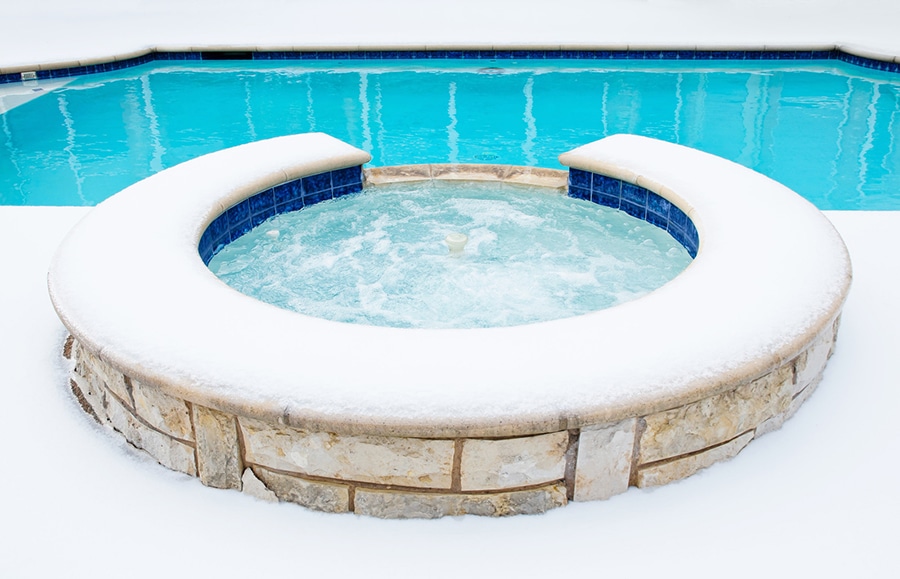
So, this all sounds great but there’s one big potential problem. Surely it will cost a fortune to keep a large body of water at a high temperature outside in the depths of winter? Won’t your energy bill sky-rocket and isn’t the cost of keeping your hot tub going erase any of the pleasure to be had from it? Let’s find out and see if there might be a silver lining to this ominous black cloud!
How much will it cost to use my hot tub over the winter?
The answer to this question will very much depend upon a number of variable factors. Firstly, it will depend on how cold the weather is, how often and for how long the hot tub is used, the thermal efficiency of the hot tub, the quality of the hot tub’s insulation and the insulating properties of the cover etc, etc, etc.
However, a modern, good quality hot tub which is well maintained and used carefully can be surprisingly economical even in extremely cold weather. The insulation on modern hot tubs is extremely efficient as are the heating elements and you could find that there is only a relatively small increase in your energy costs when compared with running the hot tub throughout the summer months.
However, an older hot tub may well cost much more to run in cold weather. The insulation is likely to be more basic and it will simply use more energy to keep warm. There are a number of ways to improve your insulation which should help and with some careful management you should be able to keep costs to a minimum but, realistically an older hot tub will use more energy.
Having said all of that though the bottom line really comes to this: If you have bought a hot tub then the chances are, that in an ideal world you would probably want to use it two maybe three times a week throughout the year. If you do this then this equates to 150 or so hot tub sessions in a year and, if you multiply this by the number of years your hot tub should last (let’s say 15 years) then you get a total number of 2,250 hot tub sessions through the lifetime of your hot tub. If your hot tub costs $10,00 then this is $4.4 per session.
If you don’t use your hot tub for four months of the year during the winter then this figure rises to $7.9 per hot tub session. The difference between these two figures is more than enough to offset the extra energy used during the winter and you get a third more pleasure and value from your hot tub as well. Now, of course, these figures are extremely approximate and I haven’t factored in repairs and maintenance costs etc but they illustrate the point. A hot tub is a luxury item and, as such, it makes sense to use it as often as possible to get the best value out of it.

Should I leave my hot tub on all winter?
So, hopefully, you have decided that the all year-round hot tub experience is for you! If you use your hot tub twice a week or more then it makes sense and is more economically viable to leave it on all the time at it’s working temperature. It takes a huge amount of energy, especially in the winter months to heat up such a large body of water. It’s much more energy efficient just to maintain the temperature of the water all the time.
If you only use the hot tub once a week or just at the weekend then you might want to consider turning the temperature down 10 degrees or so in between sessions and turning it back up the day before you want to use the hot tub. Again there are a number of variable factors that will determine which is the most efficient option for you and often, trying both methods and a bit of trial and error, as well as watching your energy usage will determine the best course of action.
Having a smart meter can be extremely useful to help record the amount of electricity used. In the UK at least energy suppliers are currently fitting these free of charge so, if you haven’t already got one, it may well be worth enquiring to see if you can have one fitted.
You can find out more about leaving your hot tub on all the time in my post here.
Winterizing a hot tub – the alternative plan.
If, even after having read this post, you feel that hot tubbing over the winter really isn’t for you then you will have to winterize your hot tub. You could, of course, just keep it running at a reduced temperature but it would be a bit of a waste of energy!
Draining the hot tub and getting it ready for winter isn’t too difficult but you do need to make sure that you do all of the right steps to avoid any possibility of frost damage. Luckily I have a detailed post on exactly how to go about winterizing your hot tub here!

